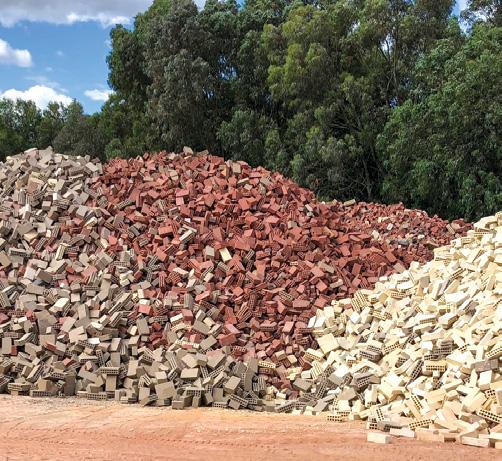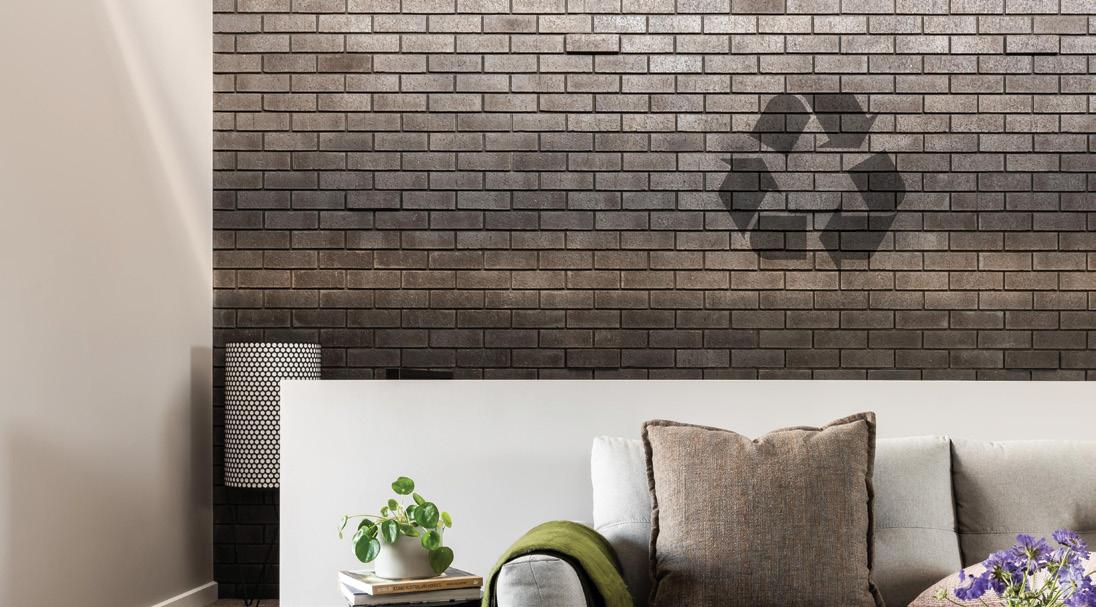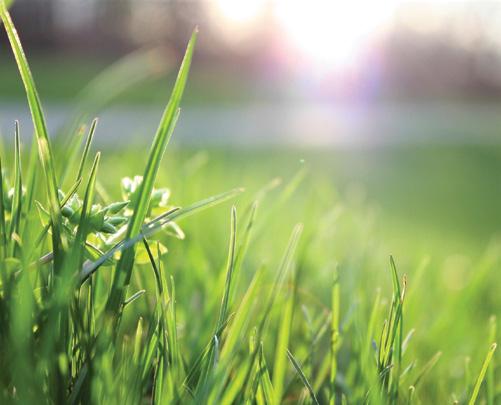
5 minute read
Resources, waste and water
Resources, WASTE & WATER
Our products are engineered to reduce material requirements, while maintaining structural integrity. We achieve this through innovative product design, raw material substitution and process resource efficiency.
RESOURCE EFFICIENCY
A key driver of resource efficiency is process optimisation and product innovation through a deep understanding of the technical properties of clay and shale raw materials. In FY19, we reviewed our raw materials and initiated a project to build a comprehensive library of the technical properties of all clay and shale raw materials. During FY20, this library will be completed to support further optimisation of materials usage and product innovation.
Brickworks continuously evaluates opportunities for closing the loop and driving the circular economy. The objective of a ‘closed-loop’ or ‘circular economy’ is to minimise waste and keep resources in use for as long as possible. This approach maximises a product’s value at each point in its life, decoupling economic growth from the use of natural resources. We continue to drive closed loop initiatives across the business. We achieved up to 50% material replacement in some masonry products, substituting cement and aggregate with fly ash, bottom ash and crushed concrete. We minimise our raw clay requirement by utilising clay sourced from infrastructure projects, which would otherwise be landfilled.
Waste reduction
PRODUCT RE-ENGINEERING
High void bricks manufactured in Queensland have reduced raw material requirements by 11% and energy requirements by 15%. Trials are underway at Austral Bricks Wollert NSW and Golden Grove SA with good initial success.
Waste reduction
ADVANCES IN RAW MATERIAL UTILISATION
Our Research and Development team continually innovates to optimise the use of raw materials through utilisation of lower quality clay reserves. Recent examples in Queensland have led to a doubling of clay reserves by utilising deeper materials effectively to produce high quality products.
75% Achieved 1 00% Achieved
We made a commitment for FY19 to develop waste reduction and recycling plans, with our National Quality Initiative meeting this target. Our FY20 target is to continue implementation of these production waste reduction and recycling plans at all manufacturing facilities.
WASTE
Brickworks is committed to minimising the amount of waste sent to landfill from its manufacturing facilities. Opportunities for the reuse of waste are a key focus area for our brick and concrete businesses to decrease material costs, increase resource efficiency and drive the circular economy.
Bricks are recyclable, allowing damaged or rejected clay products to be returned to the raw material mix. Production waste reduction continues as a focus to save energy, water and additives. Over the last 12 months, a National Quality Initiative has been implemented across all divisions. This initiative examines production waste data tracked across the last 3 years. Production waste consists of waste, reparations and downgrades. Improved monitoring and management have led to continued improvement, reducing waste costs by a total of $1.6 million over the last 24 months.
Optimised recycling procedures, such as source separation of waste, were implemented at a number of factories, improving our ability to recycle production waste.
Brickworks Ltd Total Production Waste Costs (Quality Costs $M)
Actual waste costs Historic waste costs
13
12
11
10
2016/17 2017/18 2018/19
Waste reduction
WASTE REUSE
Recycled clay now makes up 20-30% of raw materials across Queensland and NSW. Significant construction works across these states allow for significant use of clay or shale to be recycled into brick products. ENVIRONMENT
Recycling Production Waste
CRUSHING AND RECYCLING

Bristile Roofing Dandenong manufactures concrete roof tiles. The team has developed a procedure to return production waste into the raw material mix, thus reducing raw material requirements necessary to manufacture concrete roof tiles, and diverting waste from landfill.
Waste reduction
SEPARATING WASTE
Austral Bricks Cardup installed a bunker system to ensure production waste is sorted by colour to enable improved recycling.

Waste reduction
MATERIAL SUBSTITUTION

Material substitution is an important area of focus for the Group. In FY19, we conducted a successful trial, replacing dust and bottom ash for our grey block, manufactured at Austral Masonry Prospect NSW. Up to 50% material substitution has occurred in some masonry and precast products.
WATER
Water is a limited resource in most of Australia and critical to our production process and operations. Brickworks understands the importance of water efficiency.
1 00% Achieved
In FY19, all manufacturing sites completed a water recycling investigation, and water management plans were reviewed, meeting our FY19 target.
The focus of the review was to:
◗ Identify opportunities for increased water recycling ◗ Ensure our operations, particularly raw material quarrying, do not endanger local water bodies ◗ Ensure our facilities meet water restrictions in the relevant states. Many of our manufacturing facilities use runoff or bore water as the major water supply. Mains water is generally only used when ponds are dry, or ground water allocation has been met.
Brickworks is committed to minimising its mains water usage at all manufacturing sites. During FY20, we will extend water management plans to identify further opportunities to reduce mains water.
Case study
STORMWATER MANAGEMENT

Our Quarrying teams have created an innovative solution to manage excess stormwater. Due to market conditions, plant closures, and two years of above average rainfall, WA had the unique issue of excess stormwater collecting across their quarry sites. Offsite discharge of excess water is limited by sites to avoid the release of potentially turbid water from suspended clay. Our WA team developed an innovative solution to manage the excess water. A trailer mounted with a water pump and a discharge canon was built by a local company. The device has the functionality to disperse water to 50 metres at a rate of 2,000 litres per minute, and the capacity to vertically lift water up to approximately 8 meters. The water can be used for irrigation and dust suppression.
Case study

WATER REUSE
Brickworks Administration at Horsley Park NSW uses 100% recycled water to irrigate the gardens. The water is sourced from process water from Plant 1 and rainwater. The Horsley Park Quarry uses 100% collected rainwater for dust suppression.
WA Quarries Portable Water Cannon ENVIRONMENT








